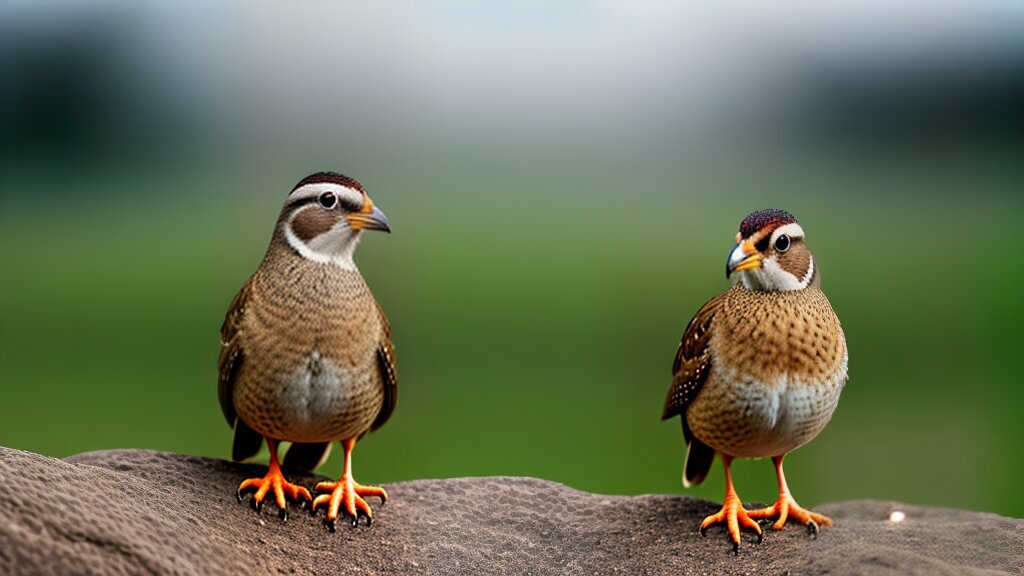How Fast Do Pigeons Fly?

Table of content:
- What is the Top Speed of a Pigeon?
- How Fast Do Racing Pigeons Fly?
- What is the Average Airspeed Velocity of a Pigeon?
- How Does a Pigeon Fly So Fast?
- Why Are Pigeons Able to Fly So Fast?
- Do Pigeons Fly Faster Than Other Birds?
- Which Birds Can Fly Faster Than Pigeons?
- How Do Pigeons Fly Long Distances So Quickly?
- Why Do Pigeons Bob Their Heads When They Walk?
- Conclusion
Pigeons are a common sight in cities and towns around the world. With their small bodies and rapidly beating wings, pigeons appear to fly very swiftly across the sky. But exactly how fast can these birds fly? Here we’ll look at the top speeds of pigeons and how they’re able to fly so quickly.
What is the Top Speed of a Pigeon?
Pigeons are capable of flying at speeds up to 77.7 mph (125 km/h), with the average pigeon flying at speeds of 50-60 mph (80-95 km/h). Racing pigeons, which are selectively bred for speed and endurance, have been clocked at speeds up to 92.5 mph (149 km/h).
To achieve these fast speeds, pigeons fly using a rapid wing flapping rate of about 5 to 9 times per second. Their lightweight bodies and powerful flight muscles allow them to propel themselves forward with each wingbeat. The shape of their wings, which have rounded tips, also enables speed and efficiency in flight.
How Fast Do Racing Pigeons Fly?
Racing pigeons are bred specifically for speed and endurance. They have slender bodies, long wings, and larger flight muscles than other pigeon breeds. Racing pigeons achieve average flight speeds of 60-70 mph (96-112 km/h).
The top speeds of racing pigeons have been measured at over 90 mph (145 km/h). One pigeon named Champion Bird measured at speeds up to 92.5 mph (149 km/h) over a 163 mile race. These birds can maintain high speeds over long distances.
Training and selective breeding produce pigeons optimized for speed. Their cardiovascular and respiratory systems are more efficient to enable sustained rapid flight. Racing pigeons also instinctively fly together in tight formations which reduces wind resistance.
What is the Average Airspeed Velocity of a Pigeon?
The average airspeed velocity of a pigeon in flight is about 50-60 mph (80-95 km/h). Airspeed velocity measures the speed of an aircraft relative to the air it is flying through, rather than ground speed.
A pigeon’s airspeed velocity is influenced by factors like:
- Wingbeat frequency – How quickly it flaps its wings
- Wing shape – Long, tapered wings reduce drag
- Body size and weight – Lighter birds require less thrust
- Air density – Thinner air at higher altitudes reduces air resistance
By optimizing these factors, pigeons can achieve fast airspeed velocity. Their rapid wingbeats, aerodynamic wings, and lightweight build enable velocity up to 60 mph through the air.
How Does a Pigeon Fly So Fast?
Pigeons have several key adaptations that allow them to fly at fast speeds:
- Rapid wing flapping – Their wings can beat up to 9 times per second, providing the powerful thrust needed to fly quickly.
- Lightweight, streamlined bodies – Weighing just 10-20 oz with slender, tapered bodies reduces the metabolic cost of flying.
- Special respiratory and cardiovascular systems – More efficient oxygen circulation gives them the metabolic energy to power sustained fast flight.
- Round-tipped wings – The shape of their wings reduces drag and turbulence, enabling smooth, swift flight.
- Coordination – Pigeons fly together in tight flocks, which reduces wind resistance for each bird.
These physical and behavioral adaptations allow pigeons to propel themselves through the air at speeds exceeding 60 mph. Their bodies are exquisitely evolved for speed, agility and endurance in flight.
Why Are Pigeons Able to Fly So Fast?
Pigeons evolved as swift fliers to aid their survival. As ground-dwelling birds vulnerable to predators, the ability to fly rapidly over long distances helped pigeons find food while avoiding danger.
Some key evolutionary adaptations that enable pigeons to fly quickly include:
- Hollow bones – Their lightweight, hollow bones reduce body weight and the energy needed for flight.
- High metabolism – A rapid metabolic rate provides energy for extended high-speed flight.
- Large breast muscles – Up to 20% of their body mass is flight muscle, providing powerful wing thrust.
- Forward-positioned wings – Wings attached at middle of body balance stability and agility.
- Simplified digestive system – A reduced digestive tract minimizes excess weight.
Millions of years of evolution shaped pigeons into swift, highly maneuverable fliers. This allowed them to thrive in diverse habitats around the globe. Their speed and endurance help them evade predators and cover large distances when foraging or migrating.
Do Pigeons Fly Faster Than Other Birds?
While pigeons are impressively fast fliers, some birds can fly even faster:
- Peregrine falcons – The fastest animal on earth, peregrines can reach speeds over 200 mph when diving on prey.
- Frigatebirds – With pterodactyl-like wings, frigatebirds have a cruising speed around 50 mph.
- Swifts – These extremely aerial birds have speeds up to 69 mph, and can fly nearly continuously.
- Ducks – Some duck species can fly 40-60 mph during migration.
In sustained, level flight pigeons are faster than many birds. But peregrine falcons and other specialists exceed pigeon speeds in stoops or short bursts. Over long migrations, pigeons likely rival or outpace most bird speeds.
Which Birds Can Fly Faster Than Pigeons?
A few groups of birds can match or surpass pigeons’ impressive airspeeds:
- Swifts – Their scythe-like wings allow sustained fast flight at over 65 mph.
- Ducks and geese – Some waterfowl reach airspeeds of 60+ mph during migration.
- Raptors – Falcons, hawks and eagles are adapted for speed, using stoops and dives.
- Gamebirds – Quail, grouse and ptarmigan can fly 60+ mph using burst flight.
- Swallows – Their streamlined bodies and long wings let them fly at up to 40 mph.
While pigeons are fast, these specialist fliers can equal or exceed pigeon speeds using adaptations like long wings and lightweight bodies. But pigeons likely beat most passerines and landbirds in sustained flight speed.
How Do Pigeons Fly Long Distances So Quickly?
Pigeons are renowned for their ability to fly hundreds of miles rapidly and accurately. So how do they fly such long distances at high speeds?
- Directional orientation – Pigeons use the sun as a compass to maintain direction over long flights.
- Navigation memory – They form complex mental maps to recall navigation waypoints.
- Flocking coordination – Flying together in groups reduces drag and energy use.
- Fuel reserves – Large breast muscles and fat stores provide energy for flight.
- Rest minimization – Brief stops recharge energy. Pigeons can sleep unihemispherically, resting each brain hemisphere in turn while flying.
This combination of adaptations allows pigeons to fly long routes of 500 miles or more nearly nonstop at speeds over 50 mph. Their unique abilities make pigeons unmatched for speed and endurance across vast distances.
Why Do Pigeons Bob Their Heads When They Walk?
The characteristic head bobbing of pigeons is related to their exceptional flight abilities. As pigeons walk, they repeatedly thrust their heads forward and then jerk them back. This motion serves a few purposes:
- Stabilizing vision – The head thrust stabilizes their vision, keeping objects steady when the body moves back and forth.
- Assessing motion – Alternately thrusting and retracting their heads may help pigeons visually gauge distances.
- Coordinating limbs – The head bob may synchronize their limbs and stabilize gait for economical walking.
- Expanding visual field – Thrusting the head expands their visual perspective of the ground to spot food or threats.
So a pigeon’s familiar head bob is tied to their athleticism in flight and their keen eyesight for navigating and foraging. Next time you see pigeons bobbing their heads, remember they’re honing the visual acuity that makes them such swift and agile fliers.
Conclusion
In summary, pigeons are impressively speedy birds thanks to evolutionary adaptations like rapid wingbeats, lightweight streamlined bodies, and efficient respiratory and cardiovascular systems. The average pigeon can fly between 50-60 miles per hour, with racing pigeons exceeding speeds of 90 mph. Their ability to fly long distances so swiftly enabled pigeons to thrive across diverse habitats around the world.
While some birds can outpace pigeons in dives or bursts, few can rival their speed with such grace and endurance. The next time you see pigeons swiftly flying by, appreciate the athleticism and aerial skill that allows those birds to cruise gracefully across the sky.
Welcome. I’m Adreena Shanum, the proud owner of this website, and I am incredibly passionate about animals, especially poultry. I founded adreenapets.com as a labor of love, stemming from my desire to share my knowledge and experiences with poultry enthusiasts worldwide.




